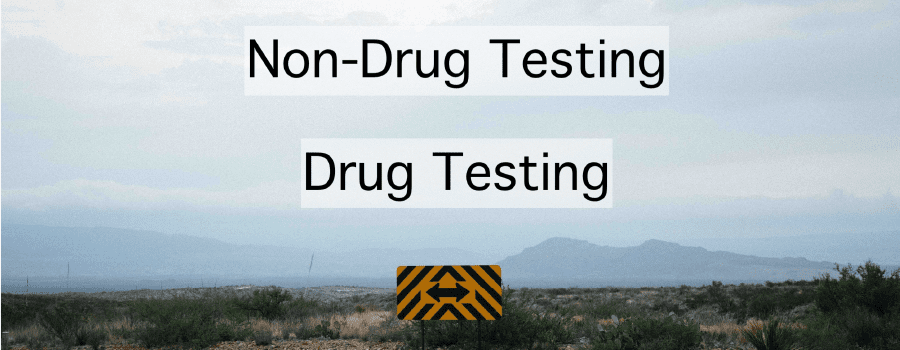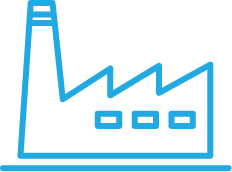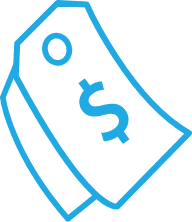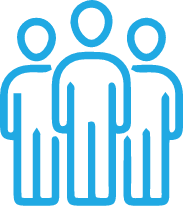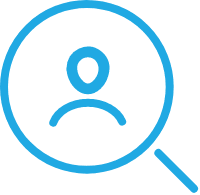By Bill Current
This information is provided for educational purposes only. Reader retains full responsibility for the use of the information contained herein.
According to Wikipedia, “a non-denial denial is a statement that, at first hearing, seems to be a direct, clear cut and unambiguous denial of some alleged accusation, but after being parsed carefully turns out to not be a denial at all.”i
In the world of workplace drug testing a new version of the non-denial denial has come into existence, it is the “non-drug testing drug testing” program. This is an effort by a company that, on the surface, looks like they’re drug testing when in reality they’re not really drug testing at all. Sure, they’re collecting urine or oral fluid samples and sending them to laboratories for analysis, but they don’t really want to know the results or do anything about the results. They just want to be able to say they conduct drug testing. Their only objective for drug testing is to “see no evil, hear no evil, do no evil.” They don’t take maintaining a drug-free workplace seriously.
The Root of the Issue
The problem with the non-drug testing drug testing program is that it does more harm than good. The primary objective has little or nothing to do with improving safety, reducing accidents, improving employee morale, or increasing productivity, and everything to do with appearances. If such an approach to drug testing actually deters some drug users from coming to work high on marijuana or others from even applying for a job, they are unintended consequences. In reality, a non-drug testing drug testing program ends up letting more drug abusers join your company, come to work high on drugs, and not be held accountable for the harm they cause to the wellbeing of your other employees and to your company’s bottom line.
Signs of a Non-drug Testing Drug Testing Program
Following are five telltale signs of a non-drug testing drug testing program and the problem with each one. If you recognize any of these conditions in your company, it’s time for an intervention.
- Not testing for marijuana—Not testing for marijuana is like trying to swim in a pool without water… no good can come of it. It also sends a clear message to your employees, your customers and the communities where you have business operations that you’ve given up. The drug abusers have won. Your company has lost. Not testing for marijuana is, perhaps, the most dangerous form of a non-drug testing drug testing program. Marijuana is the number one substance of abuse after alcohol.ii Over the past few years, the level of marijuana use has skyrocketed along with percentage of positive drug test results for marijuanaiii and the numbers of fatal vehicular accidents related to marijuana.iv To exclude marijuana from your drug-test panel is to invite all the marijuana users in your community to apply for a job with your company while at the same time inviting your employees to come to work high, regardless of the safety-sensitive nature of the work they perform. Predictably, more marijuana workers means more absenteeism, turnover, accidents, and workers’ compensation claims while productivity and safe work behavior decrease.
- Only testing for marijuana—Almost equally ineffective and dangerous is a drug testing program that only tests for marijuana at the exclusion of all other drugs. For the past few years and especially since the start of the COVID-19 pandemic, there has been a dramatic increase in the use of drugs like opioidsv and amphetamines.vi In fact, one major drug testing provider said that for the first time ever, they saw more amphetamine positives from random testing than marijuana positives.vii Only testing for marijuana essentially encourages your workers to be on the job under the influence of these other dangerous drugs without any consequences whatsoever.
- Conducting one type of test only for marijuana and another test method for all other drugs—This type of non-drug testing drug testing program is very expensive and is the classic “shooting in the dark” approach. You never know what you’re going to hit or if you will hit anything at all. The problem is a high percentage of marijuana users are polydrug users, meaning they do not limit their substance abuse to marijuana, they also take pills and abuse alcohol. On any given day a polydrug abuser might be at work operating a forklift or driving a delivery van for your company high on marijuana and the next day high on amphetamines. In a post-accident drug testing scenario, this approach gives you a 50-50 chance of testing for the right drug rather than a 100 percent chance of getting a positive test result. A 100-percent chance is important for many reasons, including the fact that in most states employers can move to deny workers’ compensation benefits based on a positive drug test result. Given the fact that the average workers’ comp claim cost $41,003 in 2017-2018,viii being able to deny a claim adds up to big savings for a typical company.
- Not testing for alcohol—Alcohol is the number one substance of abuse.ix The number of adults who admit to being binge drinkers (admitting to having 5 or more drinks on at least one occasion per month) and heavy drinkers (admitting to having 5 or more drinks on at least five occasions per month) far out paces the number of people who admit to being “regular” marijuana users. There are restrictions that apply to screening candidates and employees for alcohol that are much different than testing for drugs like marijuana, cocaine and heroin, but alcohol testing is legal in every state and very important in post-accident and reasonable suspicion testing situations. To ignore alcohol entirely is only half a drug-free workplace program which will produce only half the desired results.
- Not conducting pre-employment testing—Drug abuse is at record levels and rising. The number of people who are at work with drugs in their system is increasing annually at a dramatic rate.x The negative consequences of workplace substance abuse are undeniable, costly and often tragic—more accidents, more injuries, more workers’ compensation claims, and sometimes even fatalities. But what if a company had a way to screen out the individuals who abuse drugs before they enter your payroll. Pre-employment drug testing helps accomplish that objective and has never been more needed and important than it is right now. It is legal in all 50 states. It deters substance abusers from even applying for work with a company that conducts pre-employment testing. And it saves money. If anyone says you don’t need to conduct pre-employment testing because marijuana is legal or employers don’t have the right to know if an candidate uses marijuana, for example, run in the opposite direction as fast as possible.
Crafting an Effective Drug Testing Program
A comprehensive drug testing program, one that includes a robust drug-test panel that includes marijuana as well as the other common drugs of abuse, pre-employment testing, alcohol testing, and a zero-tolerance policy toward workers being on the job while high on any drug is a powerful, results-oriented drug testing program. It sends a clear, unmistakable message that your company takes safety in the workplace seriously, that running a profitable business is important to you, and that you care about the wellbeing of your employees, the majority of whom are not drug users or alcohol abusers.
A comprehensive drug testing program can also help to form a legal shield in the event of a lawsuit brought about by an accident caused by a substance-abusing employee high on marijuana or some other dangerous drug while on the job.
A non-drug testing drug testing program is a white flag of surrender. Don’t conduct drug testing for appearances only. Drug test to achieve specific objectives that make your company a better business. Comply with all applicable drug testing laws, but don’t surrender to drug abuse by not testing for marijuana, only testing for marijuana, not testing for alcohol, and not conducting pre-employment testing. Don’t surrender to drug abuse, the future of your company depends on it.
© 2010-2021 The Current Consulting Group, LLC – No portion of this article may be reproduced, retransmitted, posted on a website, or used in any manner without the written consent of the Current Consulting Group, LLC. When permission is granted to reproduce this article in any way, full attribution to the author and copyright holder is required.
i https://en.wikipedia.org/wiki/Non-denial_denial
ii Substance Use in the Past Month. SAMHSA. 2020 National Survey on Drug Use and Health. https://www.samhsa.gov/data/sites/default/files/reports/rpt29393/2019NSDUHFFRPDFWHTML/2019NSDUHFFR090120.htm#illicit
iii Drug Testing Index. Quest Diagnostics. 2021. https://www.questdiagnostics.com/home/physicians/health-trends/drug-testing/
iv Marijuana-Related Car Accidents. January 2021. https://www.plevinandgallucci.com/marijuana-related-car-accidents/
v Unprecedented increase in overdose deaths during the COVID-19 pandemic. Recovery Research Institute. https://www.recoveryanswers.org/research-post/unprecedented-increase-overdose-deaths-covid-19-substantial-regional-variation/
vi Q4 Update: Positivity Rates Continue To Worsen Due To the COVID-19 Pandemic. DISA. 2020.
https://disa.com/news/amphetamine-epidemic-worsens-due-to-the-impact-of-covid-19
vii Ibid.
viii NSC. National Council on Compensation Insurance’s (NCCI) Workers Compensation Statistical Plan. https://injuryfacts.nsc.org/work/costs/workers-compensation-costs/
ix Substance Use in the Past Month. SAMHSA. 2020 National Survey on Drug Use and Health. https://www.samhsa.gov/data/sites/default/files/reports/rpt29393/2019NSDUHFFRPDFWHTML/2019NSDUHFFR090120.htm#illicit
x Drug Testing Index. Quest Diagnostics. 2021. https://www.questdiagnostics.com/home/physicians/health-trends/drug-testing/


